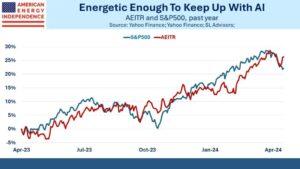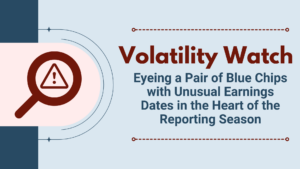Rising interest rates likely to put pressure on digital asset prices
It is likely that as long as the Federal Reserve (Fed) continues to raise interest rates, digital asset prices will be under pressure. However, at the same time, a large amount of developer activity is taking place, and several large institutions are getting ready and preparing for the next bull market in digital assets. The ecosystem continues to expand beyond Bitcoin and Ethereum but these two assets continue to represent over 50% of the approximately $1 trillion industry1.
The US 10-year Treasury (UST) yield, a risk-free rate2, stood at close to 4%3 in mid-October and rising interest rates, we believe, have impacted the Decentralised Finance (DeFi) industry particularly hard. DeFi was a popular category in late 2021 and early 2022 but has since suffered and DeFi yields have dropped in many cases to below the 10-year UST. Higher DeFi yields are still possible but require complex strategies and more risk-taking.
Ethereum upgrades, cross-chain bridge solutions and NFT-IPR in focus
After a successful move from Proof-of-Work to Proof-of-Stake the Ethereum network will continue to grab headlines in 2023. The near-term future upgrades include the unlocking of Ether that has been staked creating a yield of 4-6% for the owner of staked Ether and “Sharding”4 which will enable scalability and will potentially also address the high gas fees (transaction fees). Ethereum will potentially be a deflationary asset going forward as new Ether is expected to be issued less (miners no longer receive Ether rewards) and as the Ethereum Improvement Proposal (EIP-1559) implemented in August 2021 led to a proportion of gas fees being burned and permanently removed from the token supply. An area we continue to monitor is the potential centralisation of the network validator community and the threats of censorship this could pose to the ecosystem. Although over 422,000 validators were securing the network pre-merge, four of the largest ones (Lido Finance, Coinbase, Kraken and Binance) controlled over 60% of the Beacon Chain5.
The digital assets industry, as it is based on code, still continues to suffer from hacks and network attacks and many of them have taken place in cross-chain bridges. We expect to see significant innovation and development activity in this area to make different blockchains interoperable with each other. Two main types of solutions being developed, cross-chain solutions built directly into the consensus layer of protocols and generalised cross-chain messaging solutions built on top of cross-chain bridges.
We see significant potential in non-fungible tokens (NFTs) in the area of brand and community tokenisation. We are already seeing many creative industries adopting NFTs in the hope of unlocking value in intangible assets, creating digital communities and potentially creating a shared-ownership business model where users of networks can benefit from value accrual in communities and brands. Clarification is needed, however, with intellectual property rights (IPR) of NFTs. At the moment, many issuers of NFTs retain full ownership of the commercial rights to NFTs and this might not be appropriate for all use cases. For the industry to flourish, we believe, it is necessary to address the issue of IPR and be clear about what commercial rights, if any, the buyers of NFTs receive when purchasing the tokens.
Digital assets regulation finally taking shape and paving the way for institutional investors
Digital assets regulation is finally taking shape both in Europe and in the US. This will pave the way for institutional investors who need regulatory clarity to start investing in the ecosystem. In Europe, the Markets in Crypto-Assets (MiCA) regulation is in its final stages of being crafted and will become law across the European Union in 2024 overruling all existing national laws covering crypto markets. In the US, the Lummis-Gillibrand crypto bill called “Responsible Financial Innovation Act” is a first attempt at creating a regulatory framework for the digital assets industry. It is not yet known when, or if, this bill will become law in the US. Both bills focus heavily on regulating the stablecoin market.
Stablecoins are pegged in value to government-issued fiat currencies and could become a bit like modern-day money-market mutual funds easing the transactions between the traditional and digital assets industries. However, there is still some opacity in terms of what kind of assets actually back these stablecoins today. For stablecoins to serve their purpose as a bridge between traditional and digital worlds, they should be backed by cash, Treasury bonds or similar cash-like instruments and not by commercial paper, for example, which is much riskier to hold.
Sources
1 Source: CoinMarketCap
2 US 10-year treasury bond is considered “risk-free” as it is highly unlikely that the US government would go bankrupt
3 Source: Bloomberg
4 Sharding refers to the act of splitting the network’s data into smaller portions to enhance capacity and improve scalability
5 Beacon Chain is the Proof-of-Stake blockchain that was created pre-Merge to run in parallel with Ethereum’s Proof-of-Work blockchain
—
Originally Posted October 19, 2022 – Digital Assets Outlook
Disclosure: WisdomTree Europe
This material is prepared by WisdomTree and its affiliates and is not intended to be relied upon as a forecast, research or investment advice, and is not a recommendation, offer or solicitation to buy or sell any securities or to adopt any investment strategy. The opinions expressed are as of the date of production and may change as subsequent conditions vary. The information and opinions contained in this material are derived from proprietary and non-proprietary sources. As such, no warranty of accuracy or reliability is given and no responsibility arising in any other way for errors and omissions (including responsibility to any person by reason of negligence) is accepted by WisdomTree, nor any affiliate, nor any of their officers, employees or agents. Reliance upon information in this material is at the sole discretion of the reader. Past performance is not a reliable indicator of future performance.
Please click here for our full disclaimer.
Jurisdictions in the European Economic Area (“EEA”): This content has been provided by WisdomTree Ireland Limited, which is authorised and regulated by the Central Bank of Ireland.
Jurisdictions outside of the EEA: This content has been provided by WisdomTree UK Limited, which is authorised and regulated by the United Kingdom Financial Conduct Authority.
Disclosure: Interactive Brokers
Information posted on IBKR Campus that is provided by third-parties does NOT constitute a recommendation that you should contract for the services of that third party. Third-party participants who contribute to IBKR Campus are independent of Interactive Brokers and Interactive Brokers does not make any representations or warranties concerning the services offered, their past or future performance, or the accuracy of the information provided by the third party. Past performance is no guarantee of future results.
This material is from WisdomTree Europe and is being posted with its permission. The views expressed in this material are solely those of the author and/or WisdomTree Europe and Interactive Brokers is not endorsing or recommending any investment or trading discussed in the material. This material is not and should not be construed as an offer to buy or sell any security. It should not be construed as research or investment advice or a recommendation to buy, sell or hold any security or commodity. This material does not and is not intended to take into account the particular financial conditions, investment objectives or requirements of individual customers. Before acting on this material, you should consider whether it is suitable for your particular circumstances and, as necessary, seek professional advice.
Disclosure: Bitcoin Futures
TRADING IN BITCOIN FUTURES IS ESPECIALLY RISKY AND IS ONLY FOR CLIENTS WITH A HIGH RISK TOLERANCE AND THE FINANCIAL ABILITY TO SUSTAIN LOSSES. More information about the risk of trading Bitcoin products can be found on the IBKR website. If you're new to bitcoin, or futures in general, see Introduction to Bitcoin Futures.











![[Gamma] Scalping Please [Gamma] Scalping Please](https://ibkrcampus.com/wp-content/smush-webp/2024/04/tir-featured-8-700x394.jpg.webp)
![[Gamma] Scalping Please [Gamma] Scalping Please](https://ibkrcampus.com/wp-content/uploads/2024/04/tir-featured-8-700x394.jpg)













